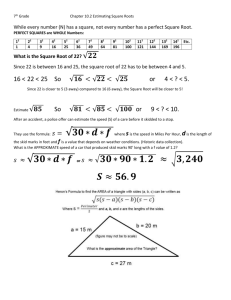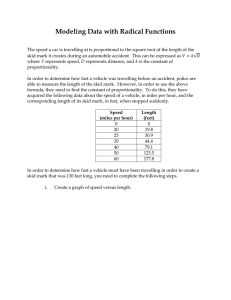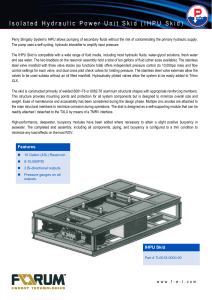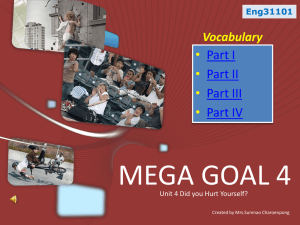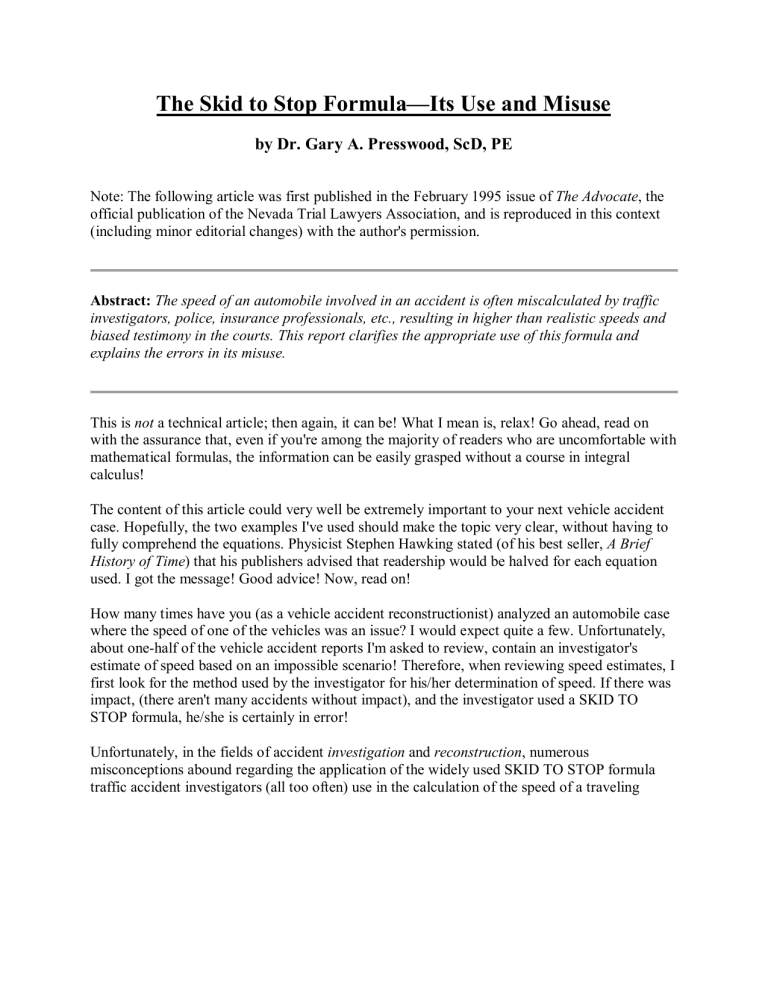
The Skid to Stop Formula—Its Use and Misuse
by Dr. Gary A. Presswood, ScD, PE
Note: The following article was first published in the February 1995 issue of The Advocate, the
official publication of the Nevada Trial Lawyers Association, and is reproduced in this context
(including minor editorial changes) with the author's permission.
Abstract: The speed of an automobile involved in an accident is often miscalculated by traffic
investigators, police, insurance professionals, etc., resulting in higher than realistic speeds and
biased testimony in the courts. This report clarifies the appropriate use of this formula and
explains the errors in its misuse.
This is not a technical article; then again, it can be! What I mean is, relax! Go ahead, read on
with the assurance that, even if you're among the majority of readers who are uncomfortable with
mathematical formulas, the information can be easily grasped without a course in integral
calculus!
The content of this article could very well be extremely important to your next vehicle accident
case. Hopefully, the two examples I've used should make the topic very clear, without having to
fully comprehend the equations. Physicist Stephen Hawking stated (of his best seller, A Brief
History of Time) that his publishers advised that readership would be halved for each equation
used. I got the message! Good advice! Now, read on!
How many times have you (as a vehicle accident reconstructionist) analyzed an automobile case
where the speed of one of the vehicles was an issue? I would expect quite a few. Unfortunately,
about one-half of the vehicle accident reports I'm asked to review, contain an investigator's
estimate of speed based on an impossible scenario! Therefore, when reviewing speed estimates, I
first look for the method used by the investigator for his/her determination of speed. If there was
impact, (there aren't many accidents without impact), and the investigator used a SKID TO
STOP formula, he/she is certainly in error!
Unfortunately, in the fields of accident investigation and reconstruction, numerous
misconceptions abound regarding the application of the widely used SKID TO STOP formula
traffic accident investigators (all too often) use in the calculation of the speed of a traveling
vehicle at its initial point of skid. Without exception, this formula is to be used only when the
skidding vehicle skids to a stop without experiencing additional energy consuming actions, such
as striking another vehicle, pole, tree, etc. This formula is never to be used when a collision,
vault, or other action occurs following the termination of the initial skid since additional energies
are present but unaccounted for in the formula. The remainder of this article shall endeavor to
explain the SKID TO STOP formula and clarify its limitations.
Occasionally, an investigator uses a chart or hand held (often cardboard) calculator in order to
quickly arrive at an estimated speed at the start of a skid. These products are very popular and
relieve the investigator of the burden of calculation; however, these products do not provide
adequate information for accident reconstruction. Then again, the investigator may opt to use the
formula which is the subject of this study. The reader should understand the chart, formula or
calculator since they all yield the same results and are based on the equation we're about to
review.
The over-used SKID TO STOP formula is only appropriate when called upon to calculate the
initial (i.e., beginning) speed of a vehicle found to have skidded to a stop. In its most basic form,
this equation (Eq. 1) takes the form:
S = {30Df}1/2
(Eq. 1)
where,
S = speed in miles per hour (MPH),
D = skid distance, in feet, and
f = drag factor.
I caution the reader that, although there is not unanimous agreement between experts regarding
the differing effects of single or multi-tire skid, the purpose of this treatise is to explain when this
formula should be used and when a more complex analysis is required. For purposes of
explanation, it is assumed in this study that all wheels skid the same length.
To illustrate the use of this formula (Eq. 1), consider an automobile skids to a stop (without
impact) leaving a measured length of skid of 90' (D). The drag coefficient (f) is found (by
measurement) to be 0.7. The initial speed (S) of the auto at the start of skid is then calculated
(using Eq. 1) at 43.5 MPH.
Consider the same example with one considerably significant difference. Instead of sliding to a
stop, our skidding vehicle ultimately collides with a (much heavier) bus, causing major damage
to both the bus and the striking automobile. Observe, the heavier bus has impeded (in part)
further travel of the auto, which would otherwise have continued in its original direction of skid
if the impact had not occurred. In this example, longer skid marks would have resulted (if no
impact occurred); therefore, it is always, always, always erroneous to use the SKID TO STOP
formula when pre-impact speed is desired. In an accident involving collision, the vehicle's speed
at the end of the skid is not zero and must be included in a similar (albeit more complex)
equation (Eq. 2), which now takes the form:
Ve2 = {Vi2 - 2 aD}1/2
(Eq. 2)
where,
Vi = initial velocity, in feet per second (FPS),
VE = velocity at the end of skid, in feet per second (FPS),
a = acceleration/deceleration, in feet per second squared, and
D = skid distance, in feet.
In this seemingly burdensome (but indispensable) form, the speed of a skidding vehicle is
calculated (in FPS) by considering and including the vehicle's speed at the end of the skid ( VE)
which must be calculated prior to application of Eq. 2. Vi may then be computed based on the
appropriate method of reconstruction analysis which is considerably beyond the objective of this
report.
Consider this second illustrative example wherein the subject vehicle has been found to be
traveling at 30 MPH (approx. 44 FPS, Vi) at the point of impact with our hypothetical bus. The
skid distance prior to impact is still 90' and the drag coefficient remains at 0.7.
In this scenario, it is obvious that additional energies (following measured skid) must be
accounted for since both vehicles sustained metal damage; also a skidding vehicle would
continue to skid for a greater distance if impact did not occur. Substituting the additional "end of
skid" velocity ( VE) of 30 MPH (44 FPS), results in a calculated (via. Eq. 2) pre-impact velocity (
Vi) of 77.4 FPS or 53 MPH compared to the lower, seemingly safer 43.5 MPH obtained by the
incorrect application of Eq. 1. It should now be obvious that the ramifications for this type of
error could conceivably result in improper issuance of traffic tickets, denial of appropriate
insurance claims, and loss of otherwise potentially valid litigation.
Hopefully, these examples have adequately exposed an all too common flaw, i.e., using a correct
formula in an incorrect application. Unfortunately, these errors can go unnoticed or are often
innocently accepted by police investigators, the courts, and insurance companies, yielding an
unfair bias to the unwitting participants.
It has been my observation that traffic accident investigators (i.e., those trained in investigation
techniques versus principles of physics used in reconstruction) are more prone to the
inappropriate use of the SKID TO STOP method in analyzing traffic accidents. Experienced
(vehicle accident) reconstructionists are, however, hopefully more versed in the more demanding
and complex principles of engineering and physics and less likely to succumb to this error. As an
aside, I suggest the reader consider the vast difference between vehicle accident investigation
versus reconstruction, the latter of which requires a greater degree of scientific knowledge, a
necessary prerequisite for effective vehicle accident reconstruction.
Hopefully, this article has adequately explained the use and misuse of the SKID TO STOP
formula. It is clearly not a SKID TO STOP "THEN SOMETHING ELSE HAPPENS"
FORMULA. Without question, the SKID TO STOP formula (Eq. 1) may be used only when a
vehicle skids safely to a stop, without impact and/or without experiencing additional physical
events at the end of the skid.
Dr. Gary A. Presswood, ScD, PE is a professional engineering firm specializing in the forensic
sciences and may be reached at:
Dr. Gary A. Presswood, ScD, PE
9103 Alta Dr., Suite 1002
Las Vegas, Nevada 89145
Office: (702) 233.8516 ~ FAX: (702) 233.8519
